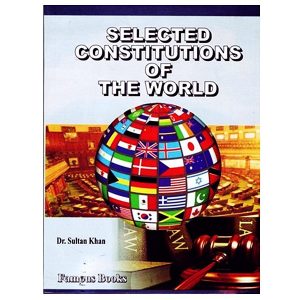
Psychology Themes and Variations 9th Ed By Wayen Weiten
Title: Psychology Themes and Variations
Edition: Ninth
Author: Wayen Weiten
Pages: 930
Subject: Psychology
How to Buy Online ? Call us at 0726540316 or Call/SMS 03336042057

Public Administration By David H. Rosenbloom 8th Edition
Recommended books for css optional subjects
Title: Public Administration
Author: David H. Rosenbloom
Edition : 8th
Pages: 606
Subject: Public Administration
HOW TO BUY ONLINE ? CALL/SMS 03336042057

Public Administration By Dr Sultan Khan
Title: Public Administration
Author: Dr.Sultan Khan
Edition: Latest
Pages: 492
Subject: Public Administration
HOW TO BUY ONLINE ? CALL US AT 0726540316 OR CALL/SMS 03336042057

Public Administration Issues and Perspectives Iqra Riaz-Ud-Din JWT
Public Administration Issues and Perspectives Iqra Riaz-Ud-Din JWT. Broadly speaking, Public Administration embraces all the activities of the government. As an activity the scope of public administration is no less than the scope of state activity. In the modem welfare state people expect many things – a wide variety of services and protection from the government.
Title: Public Administration Issues & Perspectives
Author: Iqra Riaz-Ud-Din
Pages: 487
Publisher: Jahangir’s WorldTimes
Subject: CSS/PMS Public Administration
How to Order Online ? Call/SMS 03336042057 – 0726540141

Public Administration MCQs By Hafeez ur Rehman Virk ILMI
Title: Public Administration MCQs
Authors: Hafeez ur Rehman Virk
Publisher: ILMI
Pages: 254
Subject: Public Administration
HOW TO BUY ONLINE ? CALL US AT 0726540141 OR CALL/SMS 03336042057

Public Administration Solved MCQs & Short Notes By Daniyal Shabbir HSM
Title: Public Administration Solved Mcqs 2000-2020
Authors: Daniyal Shabbir
Publisher: HSM
Pages: 178
Subject: Public Administration
HOW TO BUY ONLINE ? CALL US AT 0726540141 OR CALL/SMS 03336042057

Punjabi Marozi Sawalat By Dr Sayed Akhtar Jafri JWT
Punjabi Marozi Sawalat By Dr Sayed Akhtar Jafri JWT. Buy online as Cash on Delivery All Over Pakistan. This is the latest and updated edition of CSS Optional Subject Punjabi and published by Jahangir World Times JWT and its Author Sayed Akhtar Jafri has tried to provide maximum and up-to-date information for the subject to help students in their competitive examinations. Get Latest Edition at your home address as Cash on Delivery, order now online or Call/WhatsApp us on 03336042057 – 0726540141.
Punjabi Marozi Sawalat By Dr Sayed Akhtar Jafri JWT
Title: Punjabi Marozi Sawalat (CSS/PMS)
Author: Dr. Sayed Akhtar Jafri
Pages: 148
Publisher: Jahangir’s World Times JWT
Subject: CSS, PMS Punjabi
How to Order Online? Call or WhatsApp 03336042057 – 0726540141

Rethinking Indo-Pakistan History From 712 to 1857 By Saeed Ahmed Butt Ahad

Rethinking Pakistan a 21st Century Perspective By Bilal Zahoor & Raza Rumi
Title: Rethinking Pakistan a 21st Century Perspective
Authors: Bilal Zahoor & Raza Rumi
Publisher: FOLIO
Pages: 368
Subject: Pakistan Affairs
HOW TO BUY ONLINE ? CALL US AT 0726540141 OR CALL/SMS 03336042057

Rich Dad Poor Dad By Robert T. Kiyosaki
Title: Rich Dad Poor Dad
Paper : 248
Author: Robert T. Kiyosaki
Publisher: Plata
Subject: Novel
Rich Dad Poor Dad By Robert T. Kiyosaki
How to Order Online ? Call/SMS 03336042057 – 0726540141

Sanjh Sarat by Saeed Bhutta AH publishers
Title: Sanjh Sarat
Authors: Saeed Bhutta
Publisher: AH publishers
Pages: 376
Subject: Punjabi
HOW TO BUY ONLINE ? CALL US AT 0726540141 OR CALL/SMS 03336042057

Sanjh Wichar By Saeed Bhutta AH Publishers
Title: Sanjh Wichar
Authors: Saeed Bhutta
Publisher: AH Publishers
Pages: 804
Subject: Punjabi
HOW TO BUY ONLINE ? CALL US AT 0726540141 OR CALL/SMS 03336042057

Selected Constitutions Of The World By Dr. Sultan Khan Famous Books
Title: Selected Constitutions Of The World
Author: Dr. Sultan Khan
Pages: 646
Publisher: Famous Books
Subject: Constitutional Law
HOW TO BUY ONLINE ? CALL/SMS 0726540141, 03336042057

Selected Poems By John Keats KM Literary Series
Title: Selected Poems
Authors: John Keats
Publisher: Kitab Mahal
Pages: 439
Subject: English Literature
HOW TO BUY ONLINE ? CALL US AT 0726540141 OR CALL/SMS 03336042057

Sindh Ji Malumat By M.Saleh Kharo Roshini Publication
Title: Sindh Ji Malumat
Author: M.Saleh Kharo
Pages: 264
Publisher: Roshini Publication
Subject: Sindhi
HOW TO BUY ONLINE ? CALL/SMS 03336042057


Smart Series Computer Science By M Soban Chaudhry Caravan
Smart Series Computer Science By M Soban Chaudhry Caravan. Buy online as Cash on Delivery all Over Pakistan. Caravan Smart Series Computer Science By M Soban Chaudhry is the latest and updated edition for CSS PMS Optional Subject. Caravan Smart Series Computer Science By M Soban Chaudhry is published by Caravan Publishers and its Author M Soban Chaudhry has tried to provide maximum and up-to-date information for the subject to help students in their competitive examinations.
Title: Smart Series Computer Science
Author: M Soban Chaudhry
Publisher: Caravan Publishers
Pages: 344
Subject: CSS PMS Computer Science

Smart Study Everyday Science By Ch Najeeb Ahmed Caravan
Title: Smart Study Everyday Science
Author: Ch Najeeb Ahmed
Edition : Latest and Updated
Pages: 204
Publisher: Caravan
Subject: General Science & Ability / Everyday Science
HOW TO BUY ONLINE ? CALL/SMS 03336042057 – 0726540141

Smart Study Series English By M. Soban Chaudhry Caravan
Title: Smart Study Series English
Author: M. Soban Chaudhry
Pages: 294
Publisher: Caravan
Subject: English (Precis & Composition)
HOW TO BUY ONLINE ? CALL/SMS 03336042057

Smart study Series General Knowledge By M. Soban Chaudhry Caravan
Title: Smart study Series General Knowledge
Author: M. Soban Chaudhry
Pages: 362
Publisher: Caravan
Subject: NTS GK
HOW TO BUY ONLINE ? CALL/SMS 03336042057







